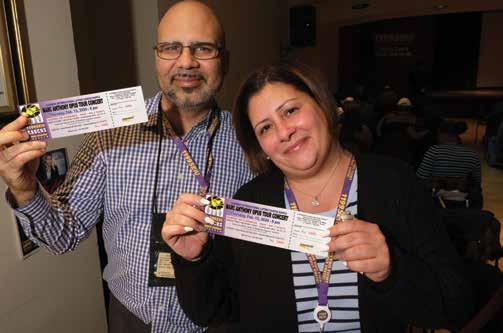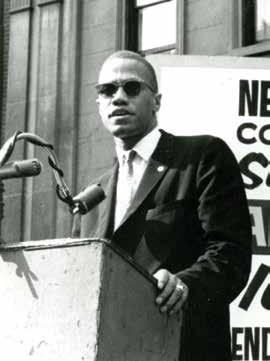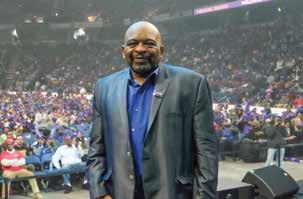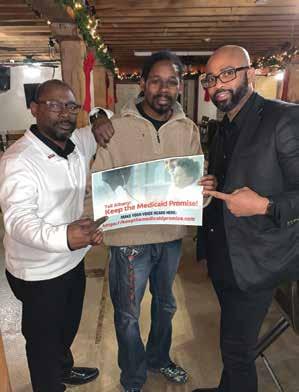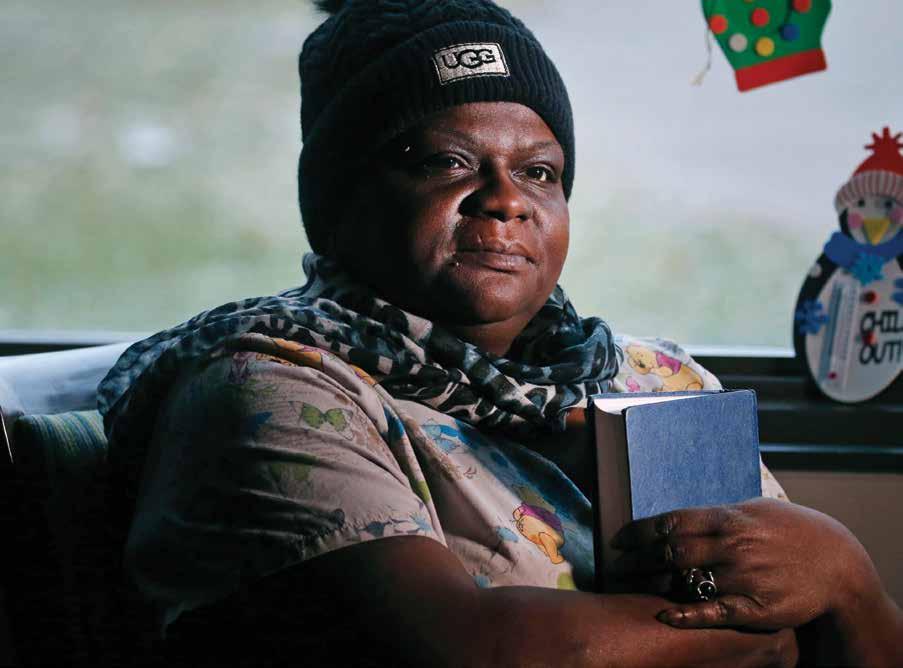OUR HISTORY
ON FRONTLINES OF
BLACK FREEDOM STRUGGLE 1199 was one of first unions to celebrate Negro History Week
“ I BEGIN TO THINK OF UNIONS LIKE LOCAL 1199 AND IT GIVES ME RENEWED COURAGE AND VIGOR TO CARRY ON.” – Dr. Martin Luther King Jr.
22
From its inception, the leftwing founders of 1199 allied themselves with the struggle of African Americans for social and economic equality. The founding pharmacy workers, most of whom were Jewish, were themselves victims of discrimination. Due in part to the anti-Semitic quota system in medical schools, many Jews settled for the pharmacy profession. In the 1930s, 1199 launched a successful campaign in Harlem to pressure drugstores to hire African American pharmacists and promote Black porters to the position of soda men. One of those porters, Theodore Mitchell, became the Union’s first African-American officer. In 1949, 1199 Pres. Leon Davis credited Harlem members with saving the Union. During “red scare” attacks by the federal government and raids by an opposing union, the North Har-
January-February 2020
lem Pharmaceutical Association, led by 1199er Howard Reckling, shut down a hundred drugstores to prevent them from being certified by the hostile union. Reckling went on to lead the National Pharmaceutical Association. He and other Harlem pharmacists in the same period hid Davis and 1199 Treasurer Eddie Ayash at the Harlem YMCA to delay the serving of a subpoena. The African American pharmacists refused to show up for work until the owners signed with 1199. 1199 declared that real progress could not be achieved for all without eliminating the whole vicious system of white supremacy. To that end, a centerpiece of 1199’s organization and mobilization has always been underscoring the connection between union rights and civil rights. To this day, members are encouraged to participate in political and civic ac-
tivities and contribute to labor and social justice campaigns. In 1960, members and staff picketed Woolworth’s stores in New York City to protest lunch-counter segregation at the chain’s southern stores. Others participated in the historic Freedom Rides. Culture was also central. Activist artists Ossie Davis and Ruby Dee often performed during Negro History Week celebrations. They and fellow artists dramatized civil rights events, such as the Montgomery bus boycott at which Rosa Parks and Dr. Martin Luther King, Jr. came to prominence Dr. King was a frequent visitor to 1199 headquarters. Few communicated as brilliantly the unbreakable ties between the economic and social struggles of working people. He said of 1199’s historic 1959 hospital strike, “It is more than a fight for union rights, it is a fight for human rights and human dignity.” Dr. King stood with 1199 during the strikes for recognition at Beth El (now Brookdale) and Manhattan Eye and Ear hospitals in 1962. That campaign led to collective bargaining rights for New York City voluntary hospital workers. A victory rally just days after the settlement reflected 1199’s influence and foreshadowed the 1963 March on Washington for Jobs and Freedom the next year. Among the organizers of the rally were Bayard Rustin, who with labor titan A. Phillip Randolph, was a principal architect of the 1963 March. Randolph and Roy Wilkins, leader of the NAACP and a 1963 March speaker, addressed the 1199 rally. Dr. King was a scheduled speaker but was unable to attend. Another speaker, Malcolm

